The Nexus family — a smartphone retrospective
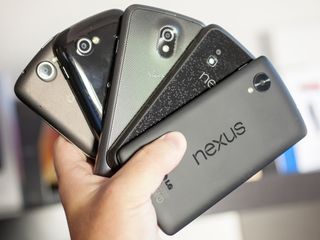
We take a look back at the five Nexus smartphones that captured our nerd hearts
As debate continues over whether we'll ever see a Nexus 6, or whether it'll be replaced by something else, like the rumored "Android Silver" program — and such conversations seem to happen around this time each year — it's time to take a trip down memory lane. We're prone to declaring "the best" of whatever around here. But when it comes to Nexus phones — those holier-than-everything-but-never-perfect smartphones we nerds obsess over every year — it's sort of hard to pick a favorite. We can't really declare one a winner over another.
Or can we? Nexus means something different to all of us. Maybe it means "developer phone." Maybe it means it's something you can tinker on without really breaking anything. Maybe it means "pure Google" and little else. Maybe it means a way to have a kick-ass smartphone without having to deal with the hell that is the U.S. carrier system.
We've all lived and loved our Nexus phones. Let's light a candle, turn on some soft music, and take a look back what made (and make) them mean so much to us.
The HTC Nexus One — Phil Nickinson
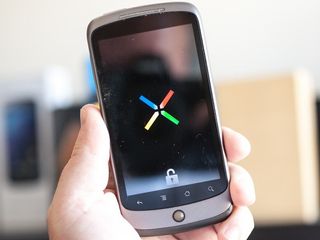
Rumors began swirling in late 2009 — actually they began long before that — that Google was working on its own phone. And as the holidays grew near and Googlers found themselves in possession of a slick little new device, the secret was pretty much out. We were getting some sort of new Android phone from Google.
The first "Google phone" was a badly kept secret, but that didn't spoil the excitement in early 2010.
A secret no more, the Nexus One was finally announced on Jan. 5, 2010, just ahead of CES. I was just a month into this job, having made the leap from writing part-time for our Windows Mobile site, the former WMExperts and now WPCentral.
And what a slick phone it was. Curvy in ways that few had done before. Made with the build quality we'd come to expect from HTC. Even the name "Nexus" just oozes cool. And Google looked to shake up the phone industry by selling the Nexus not in carrier stories, on contract, but on its own, at the now-defunct Google.com/phone. The initial release was carrier-unlocked at $529, but only had 3G bands for T-Mobile here in the U.S. An AT&T HSPA-friendly Nexus One was released a bit later. You could get a subsidized phone through T-Mobile for $129. (A plan for a Verizon-friendly Nexus One never materialized.
So things were sort of different in that you couldn't actually go into a store and pick one up. But the same in that you could buy one off contract, or not. And supported turned out to be a bit of a mess at first, too.
Be an expert in 5 minutes
Get the latest news from Android Central, your trusted companion in the world of Android
The phone, though. What a number it was. Remember that this was back before phones got huge. The Nexus One sported a 3.7-inch display at 480x800 resolution. (And back when HTC used AMOLED panels.) The Qualcomm 8250 processor was running at 1 GHz. It had a whopping 512MB of on-board storage, and just as much RAM. And it was all powered by a 1,400 mAh battery. The 5-megapixel camera was OK for its time.
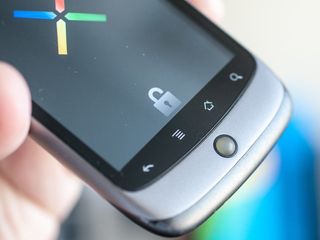
The Nexus One introduced us to live wallpapers, for better or worse. And it had a trackball!
OK, I could have lived without the trackball, though I might well have said otherwise at the time.
Even by today's standards, the Nexus One manages to catch your eye.
The Nexus One was almost more about the principle than the phone itself. Here was a device that was meant to stick it to the old carrier model (more or less). It was supposed to be easy to buy, easy to set up, easy to use. And while perhaps it wasn't the start of the "pure Google" movement, away from manufacturer and carrier corruption (the original Motorola Droid was essentially bloat-free, as you'll recall), the Nexus One quickly was made the standard-bearer. When Android 2.2 Froyo was announced at released at Google I/O a few months later, it was the Nexus One that would get it, and other updates, first. That made it even more important than just a phone you didn't have to sign away two years of your life for.
But every phone must reach its end-of-life. The Nexus One remains officially stuck on Android 2.3.6 Gingerbread.
Every now and then I have to take out the Nexus One again. Sometimes it's for a random picture. Sometimes it's for nostalgia. All I know is the damn thing still feels great in the hand. It's not the thinnest, it's not the fastest. It's not the best looking. (And now that I think about it, that sounds all too familiar, and maybe that's why I still like it so.) But it was the first. And I won't ever forget it.








- Read our complete Nexus One review from 2010!
- Find more in our HTC One forums!
Jerry Hildenbrand — The Samsung Nexus S

While the Nexus One may have been the first Nexus, the Nexus S was the first good Nexus. (That sound you hear is Phil scoffing.)
You take the best mobile hardware available from the 2010 Samsung Galaxy S phones, and build an Android phone with the latest OS and none of the stupid file system nonsense or the horrible user experience that came from using Samsung's models. Also gone were issues with power buttons, wonky touch response and the Microsoft tax from having an SD card that we saw with the Nexus One. It felt like Google was serious this time.
Google gets serious with the Samsung Nexus S.
They were more serious about selling them, too. I remember walking into Best Buy the day the Nexus S was released and buying one right over the counter. There was no waiting for shipping, and one was even on display if I wanted to touch it before I gave my money to the woman in the blue shirt. Later (almost too late) Sprint got into the game and offered their own WiMax 4G version of the Nexus S. The Nexus S was available for use on every major carrier in the world, with the exception of Verizon. We found out later that Verizon should never have been allowed to touch a Nexus device in the first place, so it turns out that this is a good thing.
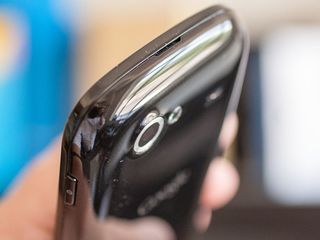
The Nexus S was not the perfect device. I don't think we've seen that just yet. but it did some things really well. It was screaming fast, and I remember when it was the Quadrant benchmark king. The GSM models had fairly good radios to keep you connected (the same can't be said about the Sprint model, unfortunately) and everything was wrapped up in a graceful curved body that had a lip near the bottom to fit perfectly into one hand. And plenty of us wish that the Wolfson WM8996 DAC was available in the phone we're using now. Folks who like great sound owe Supercurio their thanks.
All Nexus phones bring something new to the world of Android, and with the Nexus S it was Internet calling and NFC. While tap-and-pay is always the first thing to come to mind when you mention NFC, there is so much more the little near-field radio can do. According to the Android Developer resources page for Gingerbread:
"An NFC Reader application lets the user read and interact with near-field communication (NFC) tags. For example, the user can "touch" or "swipe" an NFC tag that might be embedded in a poster, sticker, or advertisement, then act on the data read from the tag. A typical use would be to read a tag at a restaurant, store, or event and then rate or register by jumping to a web site whose URL is included in the tag data. NFC communication relies on wireless technology in the device hardware, so support for the platform's NFC features on specific devices is determined by their manufacturers."
Most Android phones have an NFC chip in them now. But we've yet to see wide-spread adoption of the great things it can do on any real level. And hardly anyone uses a SIP account and Internet calling. But they were there, and they worked well.
The Nexus S had a good run. Official support stopped when Google said it would not release Android 4.2, but it's still a very capable little phone. And my favorite Nexus.





- Read our complete Samsung Nexus S review from Jan. 1, 2011!
- Find more in our Nexus S forums!
Richard Devine — The Samsung Galaxy Nexus

The Samsung Galaxy Nexus was due to make its grand debut in the U.S. the same week Apple's iconic CEO, Steve Jobs, passed away. As a result the event was pushed back, and when it finally broke free at an event in Hong Kong it was something truly spectacular — perhaps more for what it ran that what it was as a device.
Samsung's second go at a Nexus was mostly a good one.
That's because the Galaxy Nexus was the first Android device running Android 4.0 Ice Cream Sandwich. And when you compare that to 2.3 Gingerbread, the previous version of Android for phones, it was like looking at a completely different platform. Capacitive buttons were out in favor of on-screen replacements and Matias Duarte and his team had clearly left no stone unturned when it came to the software design. The name — an oddity in the annals of Nexus history — may have left no doubts over whose hardware it was, but the user experience was Google at its very best.
But the Galaxy Nexus on which it resided immediately became one of the finest Android phones you could buy. The software played a big part in that, but the phone was no slouch, either. The curved, 720p display, the magnetic dock pins on the side, that sheer black front inside a dark gray shell. The Nexus had started to grow up. It had matured into a phone that folks other than nerds and developers might actually desire.
Samsung had delivered the goods on the inside, too. In some markets 4G variants were made available and the dual-core TI OMAP CPU provided more than enough horsepower for a decent while to follow. The biggest point of contention for many was the sudden withdrawal of the microSD card slot, something which has since continued to this day.

Then seven months later the GNex, as it had become known, was the first to benefit from the enormous performance improvements introduced by Google in Android 4.1 Jelly Bean. With "Project Butter," the Galaxy Nexus was a new phone, finally casting off the chains of Android's lag-ridden pasty.
... but it was the beginning of the end for SD cards on Nexus phones.
On a personal level, the Galaxy Nexus was the very first Nexus phone I ever owned, or wanted to own. At its launch it easily stood above the other Android phones available, not least because of the leap forward in software. I remember holding it for the first time at an abandoned power station in London and leaving knowing that I had to have it.
The only regret was when the white version emerged. The Galaxy Nexus wasn't nearly as cheap to buy as recent Nexus phones, but I'd argue it was the one many of us lusted after the most.








- Read our complete Galaxy Nexus review from November 2011!
- Find more in our Galaxy Nexus forums!
Andrew Martonik — The LG Nexus 4

When Google announced the Nexus 4 in October of 2012, it marked several changes for the Nexus program. This was arguably the first good-looking Nexus device, the first iteration that Google sold directly to consumers across the world in the Play Store and one that set the pricing model for Nexuses as being high-end phones with mid-range prices.
LG gets its first crack at a Nexus, and it's a good one.
Whereas the Nexus One and Nexus S felt like developer tools, the Nexus 4 felt like a piece of fantastically-designed craftsmanship. From the minute it was leaked in all its glittery glory, people were in love with this phone's design. It's not a stretch to say that the Nexus 4 remains the most beautiful phone that Google has ever stamped the "Nexus" name on.
With its smoothly-rolled glass front, subtly flashy glass back panel and fantastic build quality (LG haters be damned), the Nexus 4 never looked like it should cost just $299 unlocked — but that's how Google priced it from day one. While the Nexus One, Nexus S and Galaxy Nexus were all rather expensive and hard to obtain, the Nexus 4 was nearly impossible to keep in stock for the first four months it was available. You could get the Nexus 4 from a variety of retailers around the world, too — you didn't have to go hunting to pick up this device.

The Nexus 4 was the jumping-off point for Google to push Qi wireless charging after abandoning the idea of pogo pin charging docks for the Galaxy Nexus and Nexus 7 (2012). Coming shortly after the Nexus 4 launch was Google's first-party "charging orb" accessory that was generally disliked for its poor design. Luckily, Google stuck with it and included Qi charging in future Nexuses along with better charging accessories.
Although the Nexus 4 didn't dramatically push forward the platform as much as previous Nexuses, I think you can applaud it for increasing the level of overall refinement of the Nexus line to levels we hadn't seen before. Google took this one seriously — it released a phone with a wonderful industrial design, a few important features and a fantastic price, pushing the Nexus name from a nerd's toy to a consumer brand.









- Read our complete Nexus 4 review from November 2012!
- Find more in our Nexus 4 forums!
- Shop for Nexus 4 accessories!
Alex Dobie — The LG Nexus 5
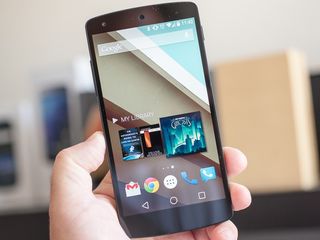
After the widespread — and arguably surprising — success of the Nexus 4, Google approached the Nexus 5 launch with a stronger retail plan, U.S. carrier support and almost immediate international availability. Whereas the N4 had proved tricky to get ahold of, especially at its insanely low launch price, I was able to walk into a store 15 hours after the announcement and buy a Nexus 5.
An underrated Nexus gets the first look at Android L.
That's not to say the news of the Nexus 5's launch was unexpected. Widespread pre-release leakage — not least of which included the device being manhandled by a Googler outside Building 44 — had given us a pretty good look at the N5's externals and some of its software. Nevertheless, it's a great example of launching a smartphone and having it available to buy within a very short period of time.
Like its predecessor, the Nexus 5 delivered top-notch hardware (for the time) at a relatively low price point. And while the chassis wasn't as outwardly flashy as the glass-backed Nexus 4, the fifth Nexus was a solid piece of hardware. The black model in particular came in a muted yet classy exterior, furnished in soft-touch plastic which contrasted with its sheer flat front. It couldn't compete with flashier offerings from HTC and Sony, but there was something understated and cool about the Nexus 5.
The Nexus 5 also saw Google and its manufacturer partner seriously up their game in terms of imaging, with an 8-megapixel sensor backed up by optical image stabilization (OIS) and a powerful new "HDR+" mode. To this day I think the Nexus 5 is tragically underrated as a smartphone camera, particularly in HDR+ mode where it's capable of outperforming some current high-end Android phones.

But the main lure of a Nexus device is a "pure Google" Android experience running on high-end hardware, and the Nexus 5 didn't fail to deliver in that area. Paired with a Snapdragon 800 processor, the new Android 4.4. KitKat was ridiculously fast. (And that's before some realized that an additional boost in performance could be had by enabling the experimental ART runtime.) Visual changes and new software tricks like the Google Now Launcher and the new Google Dialer also made KitKat on the Nexus 5 a more Googley experience. Many small changes in 4.4 added up to a version of Android that felt slicker and more professional than earlier iterations.
If the Nexus 5 had one Achilles' heel, though, it was battery life. The fixed 2,300mAh battery struggled to keep the phone's high-powered hardware going to the end of the day, and for that reason I never felt as confident taking the Nexus 5 on long trips as I did, for example, contemporaries like the Sony Xperia Z1 or Galaxy Note 3. At least the built-in Qi wireless charging softened that blow somewhat.
That battery, though. Oh, that battery.
The Nexus 5 remains a great phone to this day, especially for those looking for a high-end Android phone on a budget. But it also underscores one area of the smartphone experience where Nexus devices have typically lagged behind the competition — battery life.
If there is another Nexus phone being prepped for launch in 2014, hopefully it'll offer the longevity the series has been lacking thus far. Hopefully whatever's next will be a great phone, not just a great phone for the money.









- Read our complete Nexus 5 review from November 2013!
- Find more in our Nexus 5 forums!
- Shop for Nexus 5 accessories!
